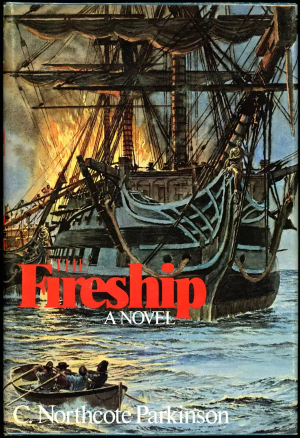-

Win a Free Custom Engraved Brass Coin!!!
As a way to introduce our brass coins to the community, we will raffle off a free coin during the month of August. Follow link ABOVE for instructions for entering.
You are using an out of date browser. It may not display this or other websites correctly.
You should upgrade or use an alternative browser.
You should upgrade or use an alternative browser.
- Joined
- Jan 25, 2023
- Messages
- 538
- Points
- 308

Usually the problem is that the rigging lines are too stiff. They won't hang in natural catenary curves.
You can stiffen rigging line and conform it to fixed shapes such as catenaries and coils, using thinned clear shellac. The line can be softened and reshaped as desired by applying alcohol, which is the solvent used in shellac. Shellac is also excellent for cementing knots in rigging line and as a general-purpose primer.
Although long a standard practice, the current thinking of professional curators and conservationists is that the application of beeswax to model rigging should be avoided due to its potential archival limitations (acidity) and its potential to attract and hold dust.
Removal of stray fibers ("fuzz") is best accomplished by "flaming" (passing quickly through a flame) the scale cordage prior to use. Some commercially available thread is sold already "flamed." "Fuzz" is, or should be, negligible in synthetic threads. Modernly, leading museum technical staff are reportedly specifying Gutterman Mara polyester thread for ship model rigging. (See: https://www.wawak.com/thread/thread...-wrapped-poly-core-thread-tex-25/#sku=gtdx800) This is due to the near impossibility of sourcing suitable linen thread, the formerly preferred archival material, following its being supplanted by polyester threads.
Although long a standard practice, the current thinking of professional curators and conservationists is that the application of beeswax to model rigging should be avoided due to its potential archival limitations (acidity) and its potential to attract and hold dust.
Removal of stray fibers ("fuzz") is best accomplished by "flaming" (passing quickly through a flame) the scale cordage prior to use. Some commercially available thread is sold already "flamed." "Fuzz" is, or should be, negligible in synthetic threads. Modernly, leading museum technical staff are reportedly specifying Gutterman Mara polyester thread for ship model rigging. (See: https://www.wawak.com/thread/thread...-wrapped-poly-core-thread-tex-25/#sku=gtdx800) This is due to the near impossibility of sourcing suitable linen thread, the formerly preferred archival material, following its being supplanted by polyester threads.
Usually the problem is that the rigging lines are too stiff. They won't hang in natural catenary curves.
"If you experience a stiffness lasting four hours or more, contact your doctor."
There's ONE in EVERY crowd..."If you experience a stiffness lasting four hours or more, contact your doctor."
Be CAREFUL or else. . .You can stiffen rigging line and conform it to fixed shapes such as catenaries and coils, using thinned clear shellac. The line can be softened and reshaped as desired by applying alcohol, which is the solvent used in shellac. Shellac is also excellent for cementing knots in rigging line and as a general-purpose primer.
Although long a standard practice, the current thinking of professional curators and conservationists is that the application of beeswax to model rigging should be avoided due to its potential archival limitations (acidity) and its potential to attract and hold dust.
Removal of stray fibers ("fuzz") is best accomplished by "flaming" (passing quickly through a flame) the scale cordage prior to use. Some commercially available thread is sold already "flamed." "Fuzz" is, or should be, negligible in synthetic threads. Modernly, leading museum technical staff are reportedly specifying Gutterman Mara polyester thread for ship model rigging. (See: https://www.wawak.com/thread/thread...-wrapped-poly-core-thread-tex-25/#sku=gtdx800) This is due to the near impossibility of sourcing suitable linen thread, the formerly preferred archival material, following its being supplanted by polyester threads.

Be CAREFUL or else. . .
View attachment 512871
Not a problem at all. I've drank many, many gallons of alcohol with a cigarette in my hand to no ill effect... Well, at least without starting a fire!
(Don't I wish........)"If you experience a stiffness lasting four hours or more, contact your doctor."
Another idea - use white glue (Elmers, PVA) to stiffen cordage. Regardless of the method you choose, cut a couple of scrap lengths and try it out before committing to your model.....Where can I purchase a “stiffer” cord for my Endurance model? I am using wax however I noticed in the tutorial videos that the craftsman is using a somewhat more firm thread. Thanks
- Joined
- Jan 3, 2025
- Messages
- 31
- Points
- 48

Ah. Bookbinders use linen thread a lot. You can get some at Talas, NY, NY.This is due to the near impossibility of sourcing suitable linen thread, the formerly preferred archival material, following its being supplanted by polyester threads.
- Joined
- Jan 25, 2023
- Messages
- 538
- Points
- 308

Phil, if you're like me, the stiffness you feel is in your back and neck and lasts a LOT longer than 4 hours.(Don't I wish........)
Ah. Bookbinders use linen thread a lot. You can get some at Talas, NY, NY.
Thanks for the tip! Unfortunately, bookbinders' linen thread isn't exactly what is required. They do have it down to 150 size, which is, I believe, around 0.2mm. That means the lower limit of what could be laid up in three strand cordage would be around 0.6mm which would preclude use on smaller scales than 1:48 and maybe even that. It's also rather expensive compared to polyester thread. Lastly, it's apparently only available in white, so it would require being dyed. It is, however, what seems to be the only source of white linen thread and worth investigating. Thanks again!


